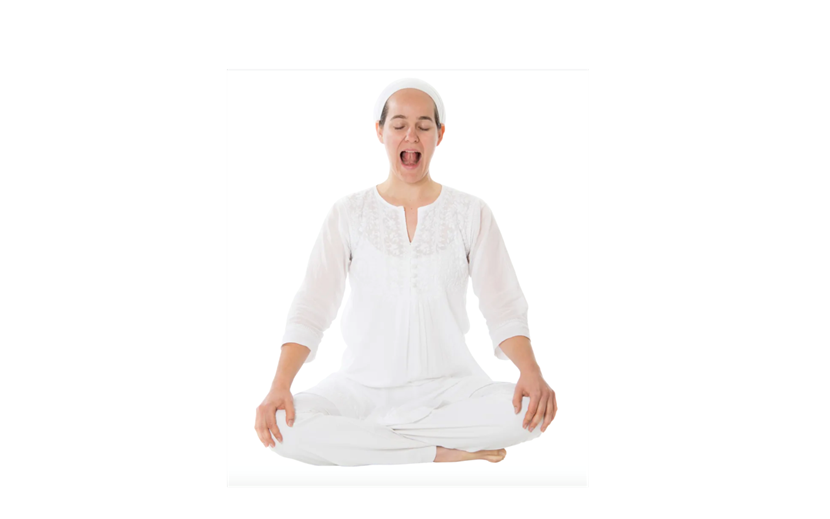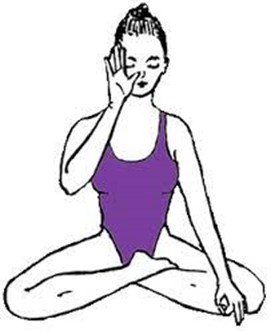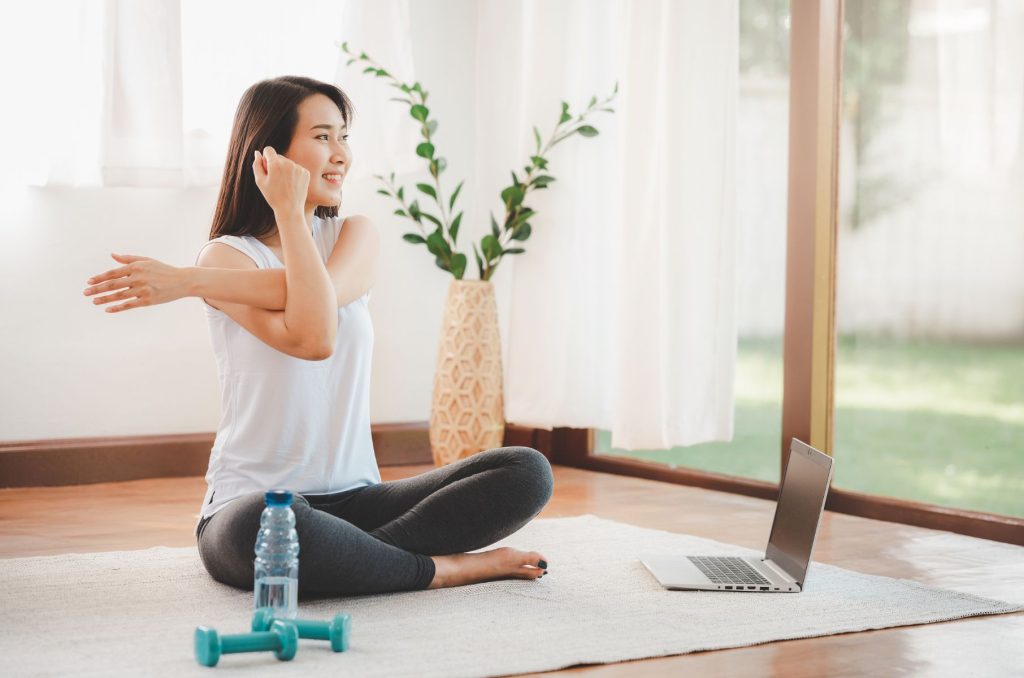4m 30s minute read
We all know working as agency nurses and midwives is strenuous. Making time to get back in touch with your body and mind through yoga is key to maintaining clarity and focus.
Yoga expert Ana Carnerero has written this exclusive piece containing exercises for the Affinity yoga travel nurses and midwives. Whether winding down from a night shift or starting your day bright and early, turn on some relaxing music and find an exercise for you below.
In this blog, you’ll find yoga exercises for:
- Any time, or before bed
- Exercises during shift break
- Exercises after finishing night shift
- Exercises before getting out of bed, and resting in bed
Yoga exercises for travel nurses and midwives
Long, deep breathing
Practice any time or before bed.
Sit in a chair, on the floor, or lie on your back, with your back fully straight and chin slightly tucked in toward the chest (gentle neck lock). Close your eyes and keep them focused between your eyebrows (the third eye).
Put your hands on your knees in Gyan Mudra (the thumb and index finger touching). With awareness, slowly inhale through the nose, relax the belly, and allow the breath to fill the abdominal cavity.
When the abdominal cavity is full, continue to inhale slowly and fill the chest cavity. When the chest cavity is full, continue upward, filling the thoracic cavity, then filling into the bottom of the throat, above the collarbone.
When you are completely full, exhale slowly, beginning to pull in the belly. Release the breath first from the throat, then the chest, then the stomach.
When you’ve completely emptied the air from your body, and as the abdominal cavity approaches the spine, inhale again and repeat the cycle. Allow your breathing to be slow and your inhale and exhale smooth and controlled.
People also call this breathing complete yogic breaths. Practicing deep breathing has countless benefits.
Here are 10 reasons why yogic breaths have a place in your day:
- Relaxation and positivity
- Balancing the brain and nervous system
- Increasing lung capacity
- Supporting the immune system
- Cleaning the magnetic field
- Controlling the levels of acidity in the body
- Cleansing toxins from the lungs
- Stimulating the production of endorphins which eliminates depressive tendencies
- Energizes and inspires
- Brings clarity
You can practice deep breathing for 3 to 11 minutes each day.

During shift break
Meditation to calm the mind: this meditation will also engage the vagus nerve and the parasympathetic response.
- Sit on the floor or chair with a straight spine.
- Relax the arms and hands in any way that feels comfortable.
- Breathe normally through the nose.
- Focus eyes at the tip of the nose.
- Open the mouth as wide as possible. Touch the tongue to the upper palate.
- Hold the position for 3 minutes
To induce your relaxation response, try this exercise:
- Sit on the floor, chair, or lie on your back
- Relax the arms and hands
- Breathe normally through the nose.
- Close the mouth with the teeth apart and start wrapping your teeth with the tongue as if you have food in your teeth that you want to remove.
- Keep doing this until there is an urge to yawn, or feel that the shoulders relax, or you need to stretch
“When you wake up first thing in the morning, alternative nostril breathing will regulate your physical and mental well-being”

Finishing night shift
If you are tired and want to get energised, practice breathing through the right nostril. This will stimulate your sympathetic response. This is also another great method to manage fatigue as an agency nurse or midwife.
- Sit on the floor or in a chair with a straight spine
- Block the left nostril with the thumb of the left hand. Keep the other fingers straight up like antennae
- Take 26 long, deep, and complete breaths through the right nostril
- Inhale and relax
If you need a general energy boost, the breathing technique below will stimulate the vagus nerve and balance your autonomic nervous system.
- Sit on the floor or a chair with a straight spine
- Block the left nostril with the thumb of the left hand
- Keep the other fingers straight up like antennae
- Exhale forcefully through the right nostril, like there is a fly in your nose that you want to get rid of
- Continue for 3 minutes
- Inhale and relax
To calm and cool down, practice left nostril breathing.
- Sit on the floor or in a chair with a straight spine.
- Block the right nostril with the thumb of the left hand. Keep the other fingers straight up like antennae.
- Take 26 long, deep, and complete breaths through the left nostril.
- Then inhale and relax.
“Practicing deep breathing has countless benefits.”
Before getting out of bed
When you wake up first thing in the morning, alternative nostril breathing will regulate your physical and mental well-being.
Alternative Nostril Breathing
Sit comfortably with a straight back and chin slightly down. Close your eyes and focus between your eyebrows. Rest your left hand on your knee with the thumb and index finger touching. Use your right hand to control your breathing.
When inhaling, breathe through the left nostril as you block the right nostril gently with your right thumb. When exhaling, block the left nostril with your right index finger. The thumb and index finger form the shape of a “U”.
This breathing creates a sense of well-being and harmony on physical, emotional, and mental levels as it balances the two hemispheres of the brain. It can help with headaches, migraines, and stress-related symptoms.
Resting in bed
If you are having trouble sleeping, place one hand on your heart and one on your belly. Let your breath be natural and allow your touch to soothe you. Soon you will be asleep.
The next time you find yourself in need of yoga to wind you down, be sure to practice these exercises straight from an expert!
Explore more useful and popular tips for travel nurses and midwives here.
Ana Carnerero is a certified yoga teacher who specialises in trauma-informed and sensitive yoga, yoga for relationships, Kundalini Yoga as therapy, food and mood connection, and Yoga Nidra.
She has worked at the P.A Hospital in Brisbane with the brain injury unit, providing adaptative chair yoga, and the Mental Health Unit for over a year. She currently works with groups in rehabilitation for drug abuse and women in DV.







